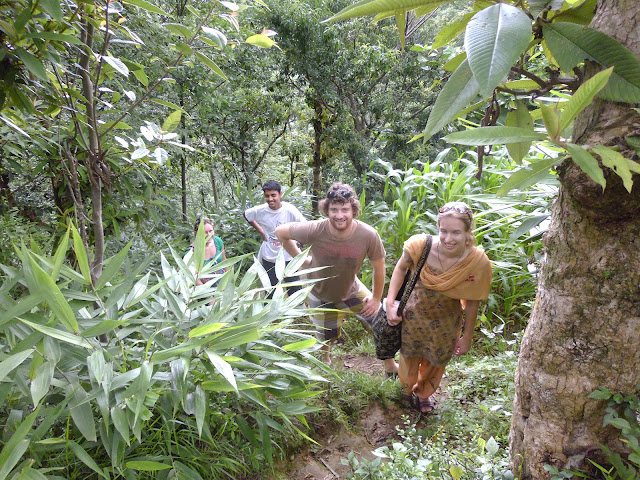We are currently on a health camp in the mid-western part of
Nepal. The camp started with two days in the beautiful mountain village of Argarli
in the Palpa region, we then moved down onto the plains for a couple of days in
some small villages outside of the city of Butwal and we are currently in the
Dang area for the final four days. The camps are proving very popular with the
locals, providing basic health check-ups, dental care, women’s health and eye
care. Medicine is provided free of cost.
Most of the doctors come from our area, with a couple from Kathmandu.
They are a great bunch of dedicated professionals who love a beer afterwards
too!

We spend most of our time working in the eye team, screening
people to be seen by the optometrist and providing glasses. We try to get time to visit our friends in
the other teams but the eye tests are very popular with the locals with the
biggest line by far. The work can be very tiring but there are some moments of
humour as well…
… One time Ashok was laughing as he overheard some of the
locals calling their friends on the phone to say ‘The American doctors are here
come quickly!’ Despite the fact that we are the least qualified people here.
… There is the moment in some of the villages where we
realise that the reason no one seems to understand what is going on is that the
villagers don’t speak Nepali but rather their local language. This can make
translation very tricky…
…There is always time for tea…
…When we went to a restaurant one evening we were served
warm beer and chilled cucumber. Seems to me they got that one the wrong way
around…
… It is the hot season on the plains, even after a ‘cold’
shower you sweat just sitting still in the shade…
… The time I asked our bus drivers assistant to help keep
curious children away from the door as they were blocking the light. He took to
the task with great gusto running after the kids he could find, and when he
couldn’t find some he went looking for more , I only wanted them kept back a
couple of metres…
These camps are a great way to bring healthcare to places
and people who rarely receive any. There are many people who are poorly
educated and illiterate, meaning that they will not go seek out healthcare for
illnesses as they are unaware that treatment is available. Even if there is a
hospital in a local town many villagers do not know to go get care or they
cannot afford the cost. It is also a great way for some of the younger doctors
to gain experience and to go and see some beautiful places well off the tourist
track.













































